From Zero to Hero: Building a Powerful Brand Online
Building a powerful brand online may seem daunting, but the journey from zero to hero is achievable with the right approach and tools. This blog will explore the essential steps to transform your brand from an unknown entity into a recognized and trusted name. We will delve into crafting a compelling brand story, utilizing social media effectively, engaging your audience, and leveraging analytics to refine your strategies.
Whether you're a budding entrepreneur or an established business looking to strengthen your online presence, our insights will guide you through building a vibrant digital identity that resonates with your target audience and stands out in the competitive online landscape. Follow along as we break down the process into actionable steps and provide real-world examples to inspire your branding success story.
Defining Your Brand’s Unique Identity
Creating a distinctive brand identity is the cornerstone of establishing a strong presence online.
Understand Your Core Values
At the heart of every brand are its core values. These values should reflect what your brand stands for and what it promises to deliver to its customers. Consider the principles that drive your brand and how they can set you apart from competitors.

Know Your Audience
You need to understand your target audience to create an identity that resonates. Identify their needs, preferences, and pain points. Tailoring your brand’s messaging and offerings to meet the specific desires of your audience will build stronger connections and foster loyalty.
Craft a Compelling Brand Narrative
A brand narrative is a story that communicates who you are, where you've come from, and where you are going. This narrative should be authentic and engaging, providing a connection point for your audience. It should encompass your unique selling proposition and highlight what makes your brand exceptional.
Visual and Verbal Consistency
Your brand's visual elements, such as logo, color scheme, and typography, should align with your message and values. Equally important is the tone of voice used in your communications. Whether it's playful, formal, or authoritative, maintaining consistency across all platforms reinforces your brand identity.
Differentiate with Innovation
Innovation is a powerful tool for setting your brand apart. By introducing unique products, services, or solutions that solve unmet needs, you capture attention and reinforce what makes your brand different. Embracing innovation ensures continual relevance in a rapidly evolving market.
Crafting a Compelling Brand Story That Resonates
Identify Your Brand's Origin
Every compelling brand story begins with understanding your origin. Delve into the history and context of your brand's inception. Highlight the initial challenges you faced, the vision that sparked your journey, and the passion that has driven your growth.
Define the Problem You Solve
Central to any great story is the problem or challenge the protagonist must overcome. Clearly articulate the specific problem your brand addresses and how it impacts your customers. Demonstrating an insightful understanding of this challenge positions your brand as a knowledgeable authority in your field.
Showcase Your Unique Solution
After identifying the problem, your brand story should focus on the innovative solution you offer. Explain why your approach is unique and what benefits it brings to your customers. Showcase the thought, creativity, and effort put into crafting a solution that stands out in the marketplace.
Highlight Your Heroes
Every story has its heroes. In your brand narrative, the heroes could be your team, your customers, or partners who have contributed to your brand's success. Share anecdotes or testimonials that illustrate how these heroes have helped your brand achieve its objectives.
Build Emotional Connections
To truly resonate, a brand story must engage the emotions of its audience. Use storytelling techniques to evoke feelings like hope, joy, or empowerment. Personal stories, vivid imagery, and relatable themes can help forge a deeper connection with your audience, making your brand more memorable.
Utilize Authenticity and Transparency
Authenticity is critical in building trust. Your brand story should be genuine and transparent, clearly reflecting your values and culture. Authentic storytelling resonates more strongly with audiences as it conveys honesty and builds credibility over the long term.
The Importance of Consistency in Online Branding
Establishing Brand Recognition
Consistency in branding is vital for creating a recognizable identity in a crowded digital market. By ensuring that your visual elements, messaging, and tone of voice remain uniform across all platforms, you make it easier for your audience to identify and remember your brand. This recognition builds a lasting impression and helps differentiate you from competitors, fostering brand loyalty over time.
Building Trust and Credibility
When your brand consistently delivers on its promises, it establishes trust and credibility with your audience. Consistent messaging reassures customers that your brand is reliable and stable, reducing uncertainty and encouraging repeat business. This trust is a cornerstone of long-term customer relationships and can lead to positive word-of-mouth referrals.
Enhancing Customer Experience
A cohesive online presence enhances the customer experience by providing familiar and streamlined interactions at every touchpoint. Whether a customer engages with your brand on social media, your website, or through email, consistency ensures their experience is smooth and harmonious. This seamless experience can improve customer satisfaction and foster stronger emotional connections.

Simplifying Decision Making
Consistency simplifies decision-making for both your brand and your customers. Internally, it provides clear guidelines for your team, facilitating cohesive communication strategies and marketing efforts. For your customers, a reliable brand presence makes it easier to understand your offerings and make purchase decisions, minimizing confusion and hesitations.
Adapting to Market Changes
While maintaining consistency is crucial, it's also important to remain flexible and adaptive to market changes. Consistency shouldn't prevent your brand from evolving; instead, it should provide a stable foundation that supports strategic shifts and innovation. By balancing consistency with adaptability, your brand can stay relevant while maintaining its core identity.
Leveraging Social Media to Amplify Brand Awareness
Understanding Your Audience
To effectively leverage social media for brand awareness, it's essential to understand your target audience. Identify the platforms where they are most active and tailor your content strategy accordingly. By aligning your efforts with the preferences and behaviors of your audience, you maximize engagement and reach.
Creating Engaging Content
Social media thrives on engaging content that captures attention and encourages interaction. Use a mix of formats like videos, images, and interactive posts to keep your audience interested. Incorporate storytelling and user-generated content to make your brand relatable and encourage sharing.
Utilizing Influencer Partnerships
Collaborating with influencers can significantly expand your reach and enhance brand credibility. Select influencers whose audience aligns with your target market, and craft authentic partnerships that allow them to communicate your brand message effectively.
Consistent Branding Across Platforms
Ensure that your brand imagery, tone of voice, and key messages are consistent across all social media platforms. This uniformity not only aids in brand recognition but also reinforces your brand identity, making it easier for potential customers to remember and engage with your business.
Monitoring and Adapting Your Strategy
Social media is dynamic, so it's crucial to monitor your performance regularly. Use analytics tools to track engagement, identify successful content, and understand audience sentiment. Be prepared to adapt your strategy based on these insights to continually optimize your efforts and drive greater brand awareness.
Engaging with Your Audience
Active engagement with your audience creates a sense of community and fosters loyalty. Respond to comments, initiate conversations, and show appreciation for your followers' support. Personal interactions can significantly enhance your brand's image and encourage word-of-mouth promotion.
Engaging Your Audience Through Meaningful Content
Understanding the Value of Meaningful Content
Creating content that resonates with audiences is essential to building strong connections. Meaningful content goes beyond mere information to connect emotionally or intellectually with the audience. It provides value through insights, solutions, or inspiration, encouraging engagement and establishing your brand as a thought leader.
Identifying Audience Needs and Interests
To deliver meaningful content, understanding your audience's needs and interests is crucial. Use analytics and feedback to identify trending topics within your niche and pinpoint what your audience cares about. Align your content strategy with these insights to address their pain points and aspirations.
Storytelling with a Purpose
Purpose-driven storytelling is a powerful way to engage your audience. By weaving narratives that reflect your brand values and mission, you generate a deeper emotional response. Incorporate personal stories, case studies, and testimonials that highlight real-world impacts and success stories to make your content relatable.
Leveraging Interactive Content
Interactive content such as polls, quizzes, and live Q&A sessions invites participation and keeps your audience engaged. These formats not only enrich user experience but also provide valuable insights into audience preferences and behaviors. By encouraging interaction, you create a two-way dialogue that enhances the connection with your brand.
Providing Educational and Informative Content
Content that educates and informs can position your brand as an authority in your field. Share insights, industry updates, how-to guides, and expert opinions to offer tangible benefits to your audience. Well-researched, educational content builds trust and establishes your brand's expertise.
Encouraging User-Generated Content
Promote user-generated content to foster a sense of community and belonging. Encourage customers to share their experiences, reviews, and stories related to your brand. By showcasing this content, you not only engage your audience but also build authenticity and trust in your brand narrative.
Creating Visual Branding That Reflects Your Values
Establishing Core Brand Values
Before designing any visual elements, it's crucial to define the core values your brand stands for. These values guide the representation of your brand's essence and should be evident in every visual element you create. By clearly understanding and articulating these values, you can ensure they are effectively conveyed through your branding efforts.
Choosing the Right Color Palette
Colors have a profound psychological impact and can convey various emotions and associations. Choosing a color palette aligned with your brand values is essential in establishing a cohesive and meaningful visual identity. Consider colors that convey your brand's personality and message, ensuring they are consistent across all platforms and materials.
Designing a Memorable Logo
A logo is often the first visual element people associate with a brand, making it a powerful tool for expressing your brand values. When designing a logo, prioritize simplicity, adaptability, and alignment with your core values. A well-designed logo should be easily recognizable, versatile, and reflective of what your brand represents.
Ensuring Consistency in Visual Elements
Consistency in visual branding is key to maintaining a strong and memorable brand identity. This includes using the same typography, imagery styles, and design layout across all brand materials. A consistent approach reinforces your brand values and ensures that your audience can easily identify and connect with your brand.
Integrating Brand Values in Imagery
Images can tell a story and evoke emotions, making them a vital component of visual branding. Select images that reflect your brand values and resonate with your target audience. Whether through photos, illustrations, or graphics, ensure that the imagery aligns with the message you wish to convey and enhances the overall brand narrative.
Reviewing and Updating Your Visual Branding
As your brand evolves, so should your visual branding. Regularly review your brand's visual elements to ensure they remain aligned with your core values and relevant to your audience. Be open to updates and refinements that enhance your visual identity and keep it in tune with both market trends and your brand mission.
The Role of SEO in Establishing Your Online Brand Presence
Understanding SEO Fundamentals
Search Engine Optimization (SEO) is crucial for increasing the visibility of your brand online. By optimizing your website and content for search engines, you can attract more visitors and enhance your brand's reach. Understanding SEO fundamentals, such as keyword research, on-page optimization, and link building, is essential to position your brand effectively in search engine results pages (SERPs).
Conducting Comprehensive Keyword Research
Identifying the right keywords is the foundation of any successful SEO strategy. Conduct comprehensive keyword research to determine the terms and phrases your target audience uses when searching for products or services related to your brand. Use these insights to create content that aligns with user intent and addresses their needs.

On-Page Optimization Techniques
On-page optimization involves refining various elements of your web pages to improve their relevance and searchability. This includes optimizing title tags, meta descriptions, headers, and image alt texts. Ensure your content is structured well, making it easier for both users and search engines to navigate and understand.
Building Quality Backlinks
Backlinks, or inbound links from other websites, signal credibility and authority to search engines. Building a robust backlink profile can significantly boost your brand's online presence. Focus on acquiring high-quality links from reputable sources relevant to your industry to enhance your site's authority and improve your ranking in SERPs.
Enhancing User Experience
A positive user experience is now a critical factor in SEO performance. Optimize your website for speed, mobile responsiveness, and intuitive navigation to keep visitors engaged. By enhancing user experience, you increase the likelihood of higher rankings and repeat visits, reinforcing the visibility and standing of your brand.
Monitoring SEO Performance
Regularly monitoring and analyzing your SEO efforts is vital to ensure their effectiveness and adaptability to changing trends. Utilize tools like Google Analytics and Google Search Console to track key performance indicators (KPIs) such as organic traffic, bounce rates, and conversion rates. These insights will help you refine your strategy for ongoing improvement and sustained brand prominence online.
Get in Touch with LevelUP Digital Solutions
Ready to elevate your brand's digital presence and drive impactful results? Contact LevelUP Digital Solutions today. Our team of experts is dedicated to crafting tailored strategies that align with your brand's goals and values. Let's work together to take your brand to the next level. Your journey to a stronger online presence starts now!
Location
25 Holden Street
Providence, RI 02908
Contact Us
Location
25 Holden Street
Providence, RI 02908



















